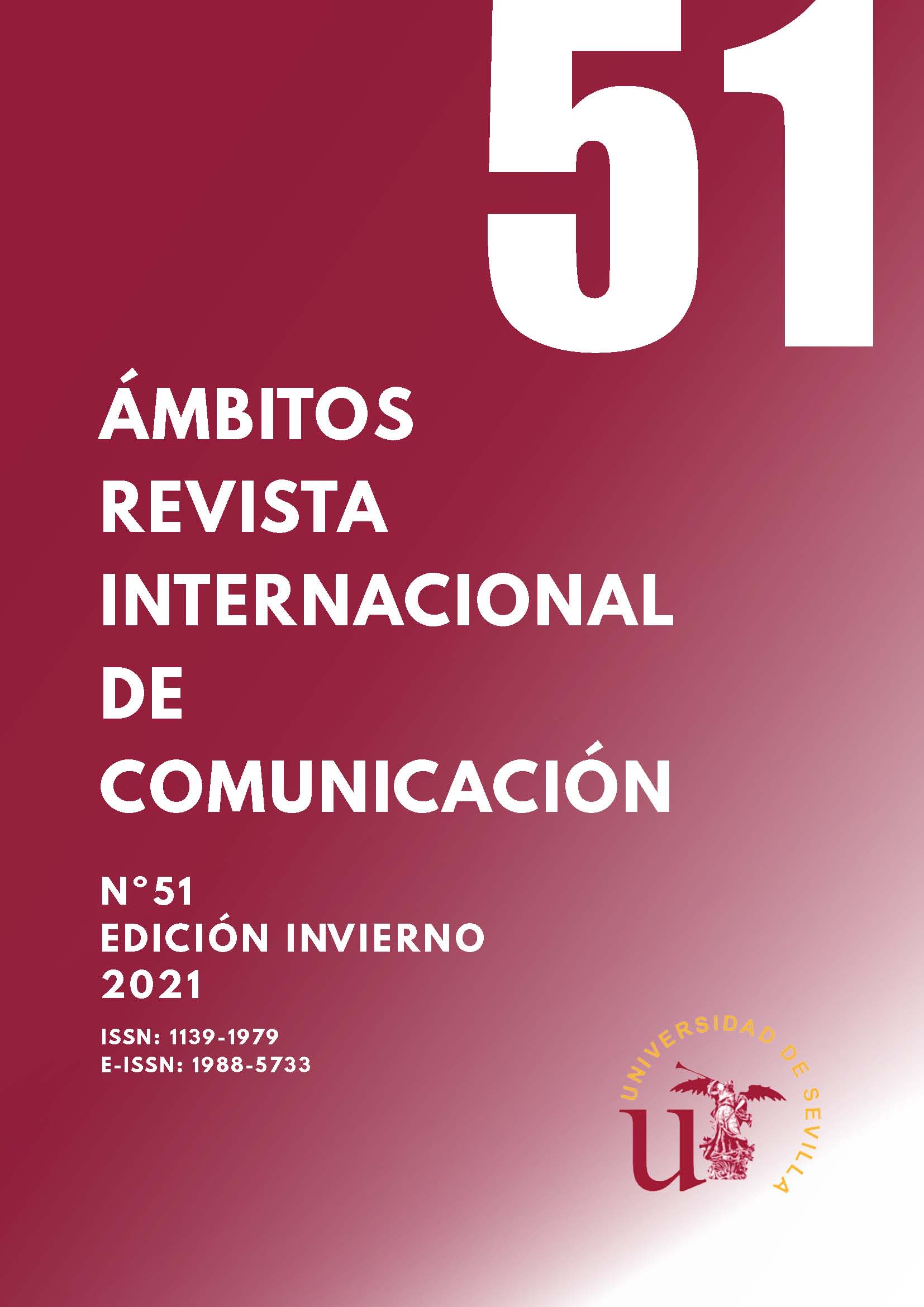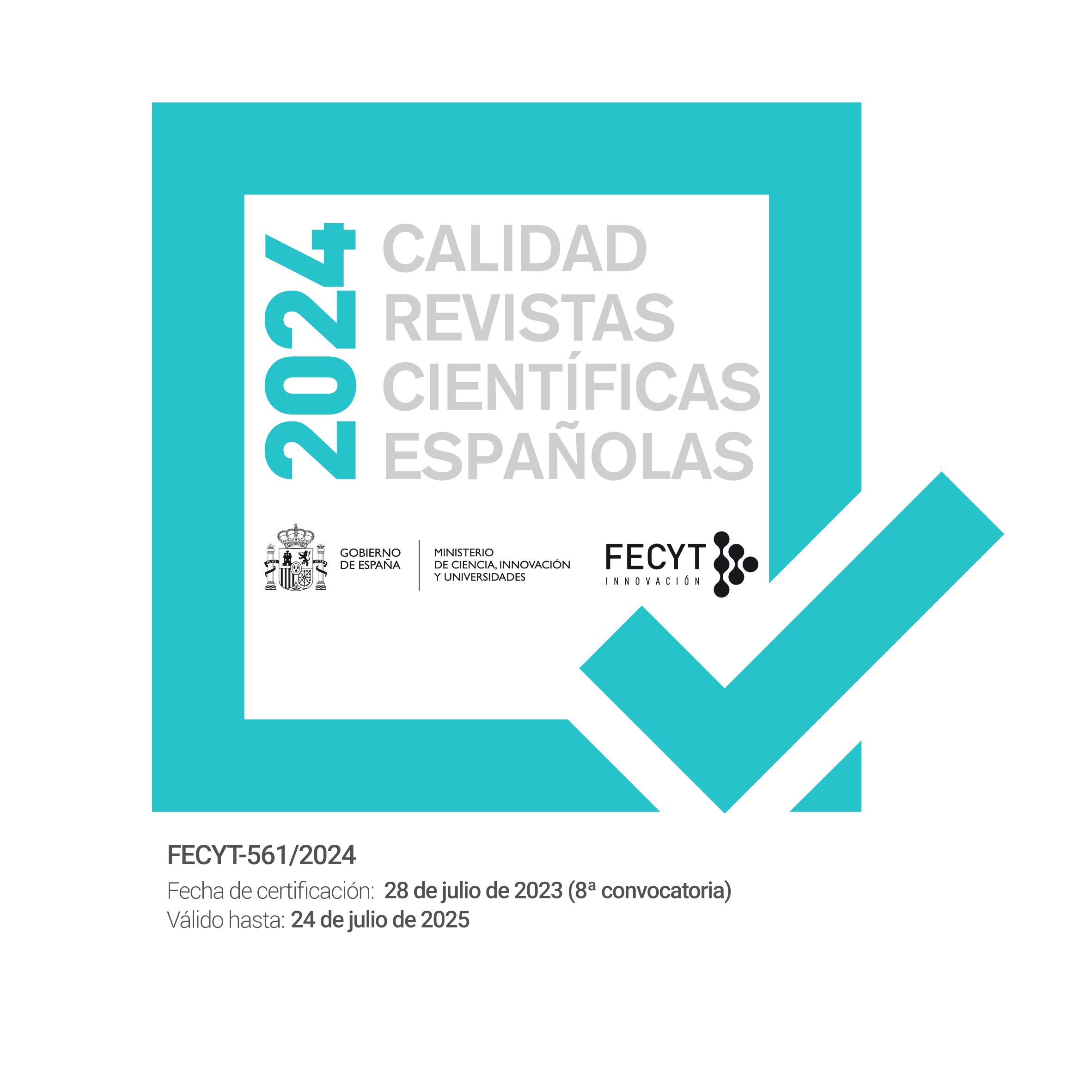New hybrid stories in Spanish fiction cinema. The case of Entre dos aguas by Isaki Lacuesta
New hybrid stories in Spanish fiction cinema. The case of Entre dos aguas by Isaki Lacuesta
DOI:
https://doi.org/10.12795/Ambitos.2021.i51.04Keywords:
cine documental, Isaki Lacuesta, géneros cinematográficos, audiovisual, narrativa fílmica.Abstract
At the 2018 San Sebastian Festival the winning film was Entre dos aguas (Isaki Lacuesta, 2018). The Catalan filmmaker constructs a fiction film that, however, is also very much self-referential and biographical and therefore journalistic (all the actors are amateurs who play themselves in the film), and uses a good part of a certain journalistic documentary visual aesthetic. These actors, in turn, had already been protagonists for 12 years before another film by the filmmaker, La leyenda del tiempo (2006). However, the value of Lacuesta's contribution lies in the fact that these characters play a life they did not live, but could easily have. In his proposal, reality is mixed with fiction in a film where both are equally plausible. The analysis of this footnote will also allow us to identify many of the characteristics of the new contemporary hybrid cinema, such as the cohabitation with objectivity, the deontology of the creator, the breaking of the frontiers between fiction and non-fiction, or the use of a certain ucrony within the script that inserts his characters (with varying degrees of luck) into their natural environment. We intend to analyze how this new hybrid film language allows a different knowledge of the environment, with all the implications that this implies.
Downloads
References
Aumont, J. & Michel, M. (1990). Análisis del film. Paidós Ibérica.
Barnouw, E. (1996). El documental: historia y estilo. Gedisa.
Blanco Pérez, M. (2020a). Nuevo Cine Andaluz. Comunicación Social.
Blanco Pérez, M. (2020b). Cine y Semiótica. Universidad de Salamanca.
Bordwell, D. & Thompson, K. (1995). El arte cinematográfico: una introducción. Paidós.
Bordwell, D.; Thompson, K. & Staiger, J. (1997). El cine clásico de Hollywood: estilo cinema-tográfico y modo de producción hasta 1960. Paidós Ibérica.
Burch, N. (1987). El tragaluz infinito. Cátedra.
Carmona, R. (2010). Cómo se comenta un texto fílmico. Cátedra.
Carrera, P. y Talens, J. (2018). El relato documental. Cátedra.
Cascosa-Virino, C. C. (2005). La televisión llega a Hollywood: una aproximación a los dra-máticos llevados al cine. Ámbitos. Revista Internacional de Comunicación, 13-14, pp. 91-108. http://dx.doi.org/10.12795/Ambitos.2005.i13-14.07.
Catalá, J. M. y Cerdán, J. (2008). Después de lo real. Pensar las formas del documental, hoy. Archivos de la filmoteca, 57. Generalitat Valenciana.
Cerdán, J. (2005). Documental y experimentalidad en España: crónica urgente de los últimos veinte años, en: Torreiro, C. & Cerdán, J. (Eds.): Documental y vanguardia. Cátedra.
Cerdán, J. (2007). Una nube es una nube, en: Cerdán, J. & Torreiro, C. (eds.): Al otro lado de la ficción. Trece documentalistas españoles contemporáneos. Cátedra.
Cerdán, J. & Torreiro, C. (2007). Al otro lado de la ficción: trece documentalistas españoles contemporáneos. Cátedra.
Eco, U. (1964). Apocalittici e integrati. Bompiani.
Fernández-Santos, Á. (2007). La mirada encendida. Debate.
González-Sánchez, J. F. & Gutiérrez San Miguel, B. (2013). El concepto de transversalidad en la enunciación del género cinematográfico. Ámbitos. Revista Internacional de Comunicación, 22. http://dx.doi.org/10.12795/Ambitos.2013.i22.09.
Gutiérrez-San Miguel, B. (2015). Estudio evolutivo del lenguaje narrativo, desde los primeros documentales a las transmedias, en Fernández-Guerra, V. (ed.), Revisitando el cine documental: de Flaherty al webdoc. (pp. 207-244), Cuadernos Artesanos de Comunicación, 83. Latina.
Heredero, C. F. (1995). Abbas Kiarostami. Más allá de la realidad; más cerca de lo real. Nosferatu. Revista de cine, 19, 80-87. http://hdl.handle.net/10251/40941
Lugón, O. (2010). El estilo documental. De August Sander a Walker Evans 1920-1945. Universidad de Salamanca.
Marzal-Felici, J. y Gómez-Tarín, F. J. (2007). Metodologías del análisis del film. Edipo.
Orihuela, A. (2004). La voz común: una poética para recuperar la vida. Tierradenadie Ediciones.
Palacio, M. (2007). Estudios culturales y cine en España. Comunicar, revista científica de Comunicación y Educación, 29, v. XV. 69-73.
Sánchez Noriega, J. L. (2012). Compromiso y creatividad artística en el realismo de Montxo Armendáriz. Ámbitos. Revista Internacional de Comunicación, 21, 186-206. http://dx.doi.org/10.12795/Ambitos.2012.i21.10
Sucari, J. (2013). El documental expandido: pantalla y espacio. UOC.
Tello-Díaz, L. (2016). La 'mirada femenina': estereotipos y roles de género en el cine español (1918-2015). Ámbitos. Revista Internacional de Comunicación, 34. http://dx.doi.org/10.12795/Ambitos.2016.i34.05
Thompson, K. (2001). Storytelling in the New Hollywood: Understanding classical narrative technique. Harvard University.
Downloads
Published
How to Cite
Issue
Section
License
Ámbitos. Revista Internacional de Comunicación is an open access journal, which means that all content is freely available at no charge to the user or their institution. Users may read, download, copy, distribute, distribute, print, search or link to the full text of articles, or use them for any other lawful purpose, without seeking prior permission from the publisher or author. This definition of open access is in accordance with the Budapest Open Access Initiative (BOAI).

Unless otherwise noted, all content in the electronic edition is distributed under a "Creative Commons Attribution-NonCommercial-ShareAlike 4.0 International License". You can consult the informative version and legal text of the licence here. This should be expressly stated in this way where necessary.
In case of acceptance of the manuscript, the authors cede the rights of the work for its publication to Ámbitos. Revista Internacional de Comunicación under the Attribution-NonCommercial-ShareAlike 4.0 International license contract (CC BY-NC-SA 4.0). The authors retain copyright and third parties are authorised to copy, distribute and make use of the work, provided they comply with the terms and conditions set out in the licence
- Cite the authorship and the original source of publication (journal, publisher and URL of the work).
- Do not use them for commercial purposes.
- If you remix, transform or create from the material, you must release your contributions under the same license as the original.
More information can be found at https://creativecommons.org/licenses/by-nc-sa/4.0/deed.es


















